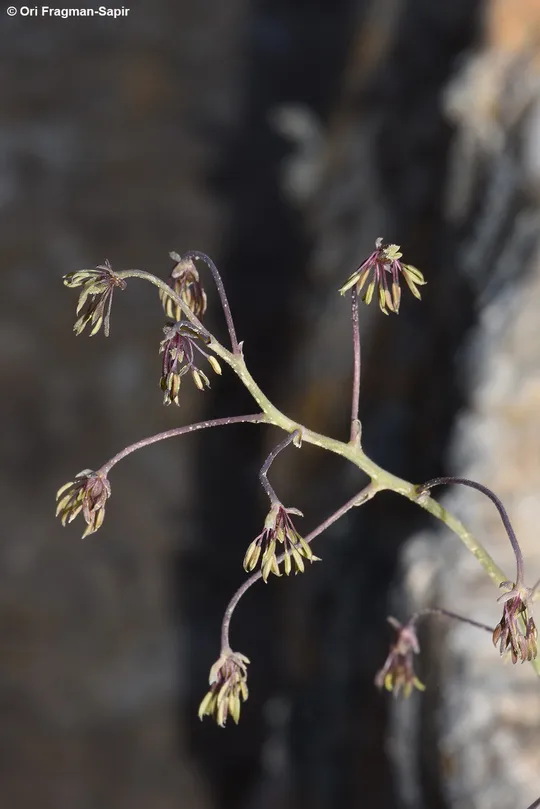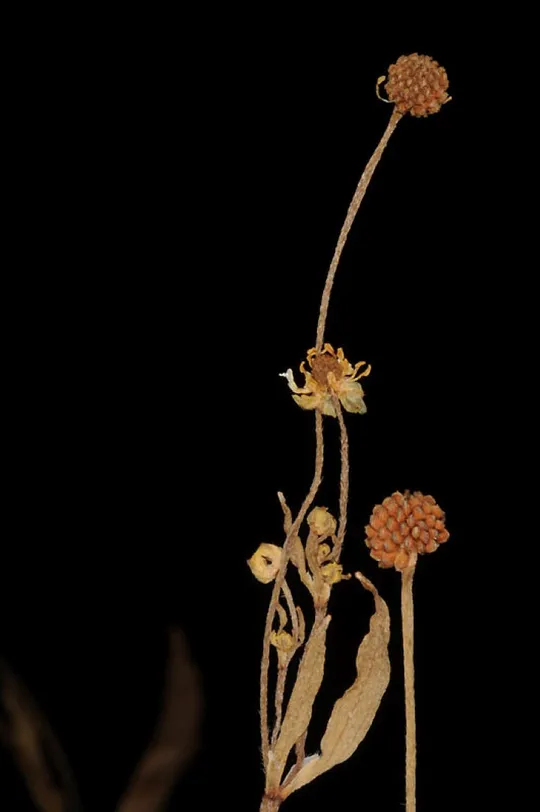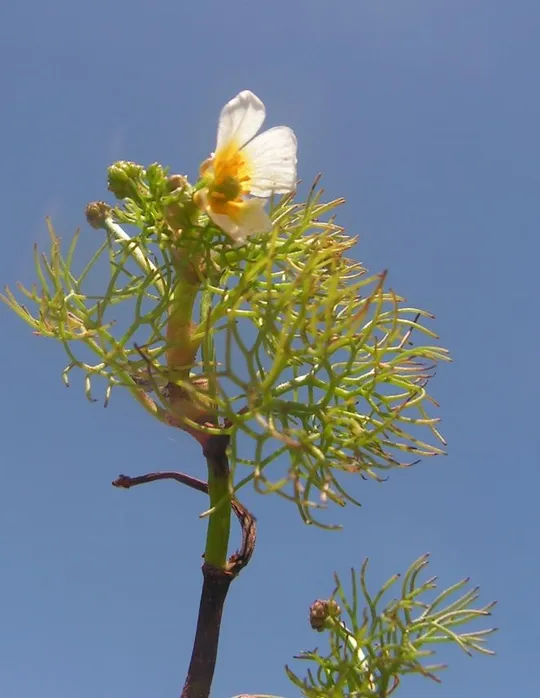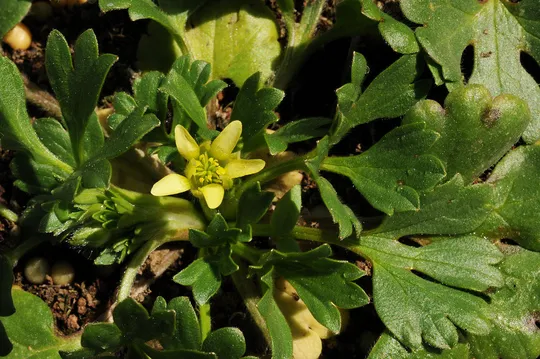Summer Adonis, Summer Pheasant's-eye
Adonis aestivalis
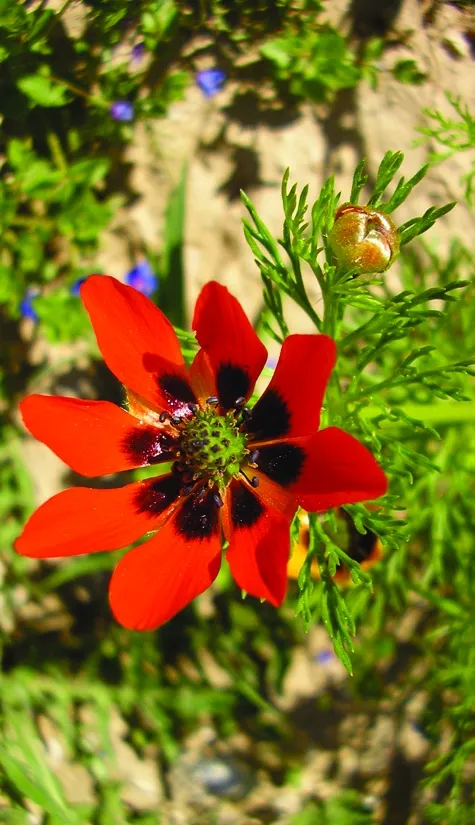
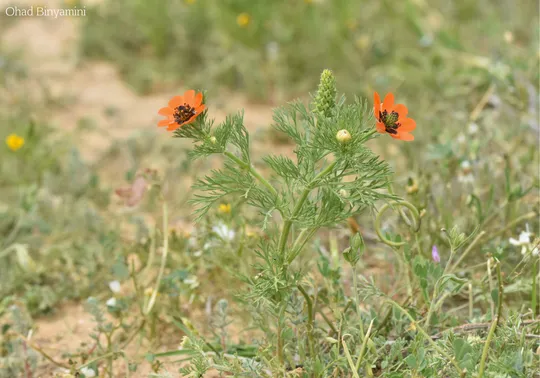
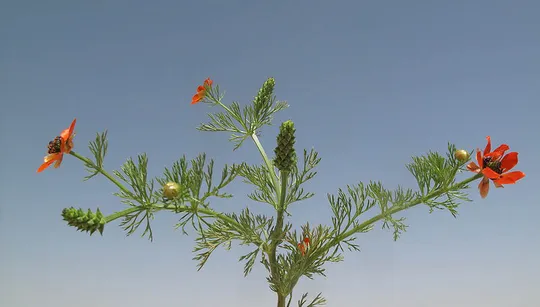
Adonis aestivalis is rare in Israel and limited to the northern Negev in the Arad Valley area, the Negev Highlands and the Ma'on Ridge (which is formally included in the southern Judean Mountains). An abundant population grows in the fields around Tel-Arad, in Wadi Mar'it and at the foot of Mount Amasa. The edges of this population reach east to the town of Arad and south to Dimona. It is very rare in the Lots Cisterns in the Negev Highlands. A few individuals grow on the Ma'on Ridge in the southern Mount Hebron area, which could be considered as the edges of the large Arad population. There is also a herbarium sheet from Bet Zera in the southern Kinarot Valley from 1968.
Traditionally farmed and
plowed loess fields.
The genus Adonis includes 26 herbaceous
species that are common in Europe, the Mediterranean and Asia, of which 18 are
perennial species and 8 are annuals, all of them growing around the Mediterranean. Five of them grow in Israel. A study conducted in Israel (Heyn and Pazy, 1989),
found that A. aestivalis is
polyploid and contains 48 chromosomes, unlike A. annua, A. dentata and A. palaestina, which
have only 16 chromosomes. Compared to the other Adonis
species in Israel, most of which have
red flowers, A.
aestivalis is the only one with orange-red
flowers. In the Arad Valley A.
aestivalis blooms in the same fields together
with A. dentata, a desert-steppe species with yellow flowers.
From the taxonomic aspect A. aestivalis
is close to A. palaestina. Indeed M. Zohary, in the first volume of the Flora Palaestina
(1966) gave A. palaestina the status of a
variety in the A. aestivalis species. Consequently, the range of the unified taxon is broad.
·
Adonis aestivalis is a rare plant, known
from only 10 sites, most of them in the Arad Valley.
·
The
transition from traditional cultivation methods in the
Arad Valley loess fields to modern cultivation methods could
lead to the destruction of the habitat.
·
The
size of the Arad Valley population reaches hundreds
of plants per 1000 sq. m. In some years (e.g. 1988) dense
flower carpets appear. On the Ma'on Ridge and in the Negev Highlands only a few
plants are found.
·
A. aestivalis is an attractive plant because
of its color and the size of
its corolla and is picked by Bedouins and
travelers.
·
In
the Tel Arad and Tel Krayot reserves,
some A. aestivalis plants are protected, but the large
populations are located outside the reserve.
Two nature reserves should be established in the Arad Valley at the center of the Adonis aestivalis population, one in Wadi Mar'it and the other near Tel Arad. These reserves will preserve traditional agricultural methods and long-term monitoring of the populations and their seed bank will be conducted.
Adonis aestivalis
has a very broad distribution in the Mediterranean, Europe and central Asia: from Spain, all the Mediterranean
countries including the islands, the Maghreb and the southern countries; in the Middle East –
Israel, Jordan, Syria, Lebanon, most of the regions of Turkey, Iraq and Iran. Its range continues eastwards to Kashmir, India to the Himalayas. In the Euro-Siberian region
it grows from the Atlantic coast through Central Europe, the Black Sea,
and the Caucasus up to western Siberia. It is not found in Sinai and in Egypt.
Unlike its rare status in Israel,
it is a common species throughout Jordan. In the Karakh Plateau in
southern Moab, it grows
on expanses of loess fields in the transition zone at an altitude of 900-1,100
meters.
Adonis
aestivalis is an annual plant with an attractive orange-reddish flower, whose global distribution is very
broad. In Israel, its populations
are limited almost exclusively to the Arad valley on
loess expanses. The southern Mount Hebron populations and the rest of the northern Negev can be considered as marginal
populations, supported by the Arad Valley population. In order to preserve the species it is important to maintain traditionally cultivated loess areas.
Heyn, K and.Pazy, B. 1989 Tha Annual species of Adonis – a polyploidy complex. Pl.Sys. Evo. 168:
181-193
Current Occupancy Map
| 1000 squre meter pixel | 5000 squre meter pixel | 10000 squre meter pixel | |
|---|---|---|---|
| number of observations | 0 | 0 | 0 |
| in total pixels | 0 | 0 | 0 |
| Family | Ranunculaceae |
| Classification | On the endangered species list |
| Ecosystem | Semi-Steppe Belt |
| Chorotype | Mediterranean, Euro- Siberian & Irano-Turanian |
| Conservation Site | Fields near Tel Arad |
| Rarity |
1
3
6
|
|---|---|
| Vulnerability |
0
2
4
|
| Attractiveness |
0
2
4
|
| Endemism |
0
1
4
|
| Red number |
1
4.2
10
|
| Peripherality | 0 |
| IUCN category | DD EW EX LC CR EN VU NT |
| Threat Definition according to the red book | Endangered |
 Based on:
Based on:
